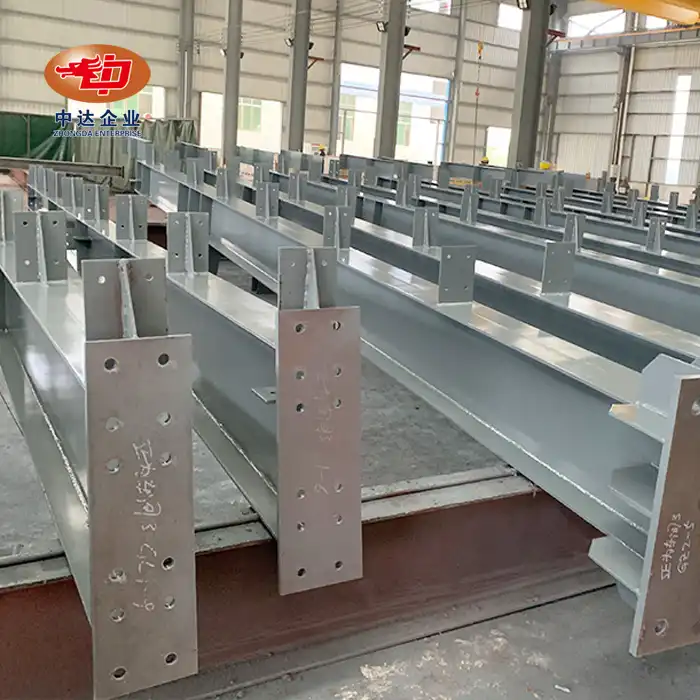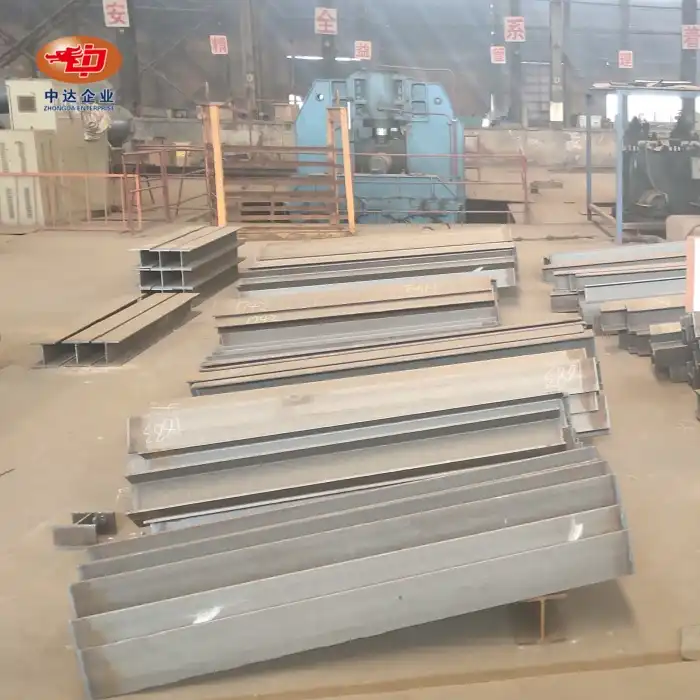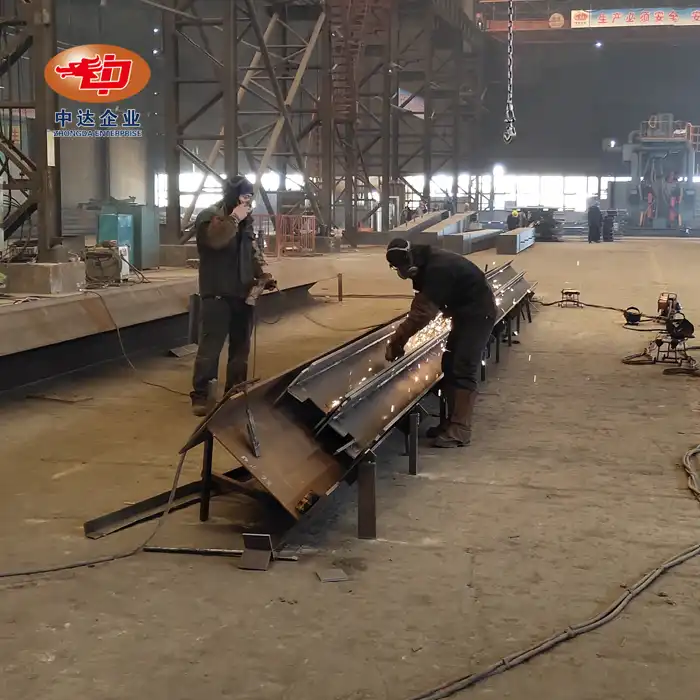
Does Loader Bucket Material Become Brittle in Extreme Cold (-40°C)?
When it comes to loader buckets operating in extreme cold conditions like -40°C, the concern about material brittleness is valid but can be effectively addressed with the right steel selection and manufacturing processes. At Zhongda Steel, we specialize in high-performance steel solutions that maintain their integrity even in the harshest environments. Our Hardox 450 steel, for instance, exhibits excellent low-temperature toughness, retaining its impact resistance even at -40°C. This is achieved through careful alloy design, including the addition of elements like niobium and vanadium. Additionally, our advanced welding techniques, such as using low-hydrogen electrodes and preheating to temperatures ≥120°C, ensure structural stability and prevent cold cracking in welds. With these innovations, loader buckets made from our materials can operate reliably in extreme cold without becoming brittle.
Understanding Material Behavior in Extreme Cold
The Science of Low-Temperature Embrittlement
Low-temperature embrittlement is a phenomenon where materials, particularly metals, become more brittle and susceptible to fracture as temperatures drop. This occurs due to changes in the material's microstructure and reduced atomic mobility at lower temperatures. In steel, the body-centered cubic (BCC) crystal structure of iron becomes less ductile, potentially leading to sudden failures if not properly addressed.
Critical Factors Affecting Cold Weather Performance
Several factors influence how materials perform in extreme cold:
- Chemical composition: Alloying elements like nickel and manganese can improve low-temperature toughness.
- Grain structure: Finer grain sizes generally provide better low-temperature performance.
- Heat treatment: Proper quenching and tempering can optimize the steel's microstructure for cold resistance.
- Manufacturing processes: Controlled rolling and accelerated cooling can enhance low-temperature properties.

Importance of Material Selection for Loader Buckets
Choosing the right material for loader buckets operating in extreme cold is crucial. The material must maintain its strength, toughness, and wear resistance at low temperatures to ensure operational safety and efficiency. Failure to select appropriate materials can result in unexpected breakdowns, reduced productivity, and potential safety hazards in challenging environments like Siberian mining operations.
Innovative Steel Solutions for Extreme Cold Applications
Advanced Alloy Designs for Low-Temperature Toughness
At Zhongda Steel, we've developed advanced alloy designs specifically tailored for extreme cold applications. Our Hardox 450 steel, for example, incorporates carefully selected alloying elements like niobium and vanadium. These elements contribute to grain refinement and precipitation strengthening, which help maintain the steel's toughness even at -40°C. The result is a material that combines high hardness with excellent low-temperature impact resistance, making it ideal for loader buckets in arctic conditions.
Heat Treatment Processes for Enhanced Cold Resistance
Our steel undergoes sophisticated heat treatment processes to optimize its microstructure for extreme cold performance. This includes precise control of quenching and tempering parameters to achieve the ideal balance of strength and toughness. By carefully managing the martensite transformation and subsequent tempering, we create a microstructure that resists brittle fracture at low temperatures while maintaining the necessary wear resistance for loader bucket applications.
Surface Engineering Techniques for Improved Durability
In addition to bulk material properties, we employ advanced surface engineering techniques to enhance the durability of loader buckets in extreme cold. This may include surface hardening treatments or the application of specialized coatings that provide an extra layer of protection against wear and corrosion in harsh, low-temperature environments. These surface treatments complement the inherent properties of the base material, further extending the service life of loader buckets in challenging conditions.
Ensuring Structural Integrity in Extreme Cold Fabrication
Specialized Welding Techniques for Low-Temperature Applications
Welding is a critical aspect of loader bucket fabrication, and it becomes even more challenging when the end product must withstand extreme cold. At Zhongda Steel, we've developed specialized welding techniques to ensure structural integrity at low temperatures. We utilize low-hydrogen electrodes to minimize the risk of hydrogen embrittlement, which can be particularly problematic in cold environments. Additionally, our welding procedures are carefully designed to control heat input and cooling rates, preserving the base material's low-temperature toughness throughout the welded structure.
Preheating Strategies to Prevent Cold Cracking
To further mitigate the risk of cold cracking in welds, we implement rigorous preheating strategies. For materials like Hardox 450, we recommend preheating to temperatures of 120°C or higher before welding. This preheating process helps to slow the cooling rate of the weld and surrounding heat-affected zone, reducing the formation of brittle microstructures and minimizing residual stresses. By carefully controlling the thermal cycle during welding, we ensure that the final welded structure maintains its toughness and integrity even when exposed to -40°C temperatures.

Non-Destructive Testing for Quality Assurance
To guarantee the reliability of loader buckets in extreme cold, we employ a comprehensive suite of non-destructive testing (NDT) methods. These include ultrasonic testing to detect internal flaws, magnetic particle inspection for surface defects, and radiographic examination of critical welds. We also conduct low-temperature impact tests on representative samples to verify the material's toughness at the intended operating temperature. This multi-faceted approach to quality assurance ensures that every loader bucket leaving our facility is capable of withstanding the rigors of extreme cold operations.
Conclusion
In conclusion, while extreme cold poses significant challenges for loader bucket materials, innovative steel solutions and advanced manufacturing techniques can effectively prevent brittleness at temperatures as low as -40°C. Zhongda Steel's expertise in developing high-performance steels like Hardox 450, combined with our specialized fabrication processes, ensures that loader buckets maintain their structural integrity and operational efficiency even in the harshest arctic conditions. By leveraging cutting-edge alloy designs, optimized heat treatments, and rigorous quality control measures, we provide loader buckets that deliver reliable performance and extended service life in extreme cold environments.
Contact Us
For unparalleled steel solutions that stand up to the toughest cold-weather challenges, trust Zhongda Steel. Our commitment to engineering excellence and global impact means you'll receive Hardox 450 loader buckets and other steel structures that exceed expectations in even the most extreme conditions. Ready to elevate your cold-weather operations? Contact us at Ava@zd-steels.com to discover how our innovative steel solutions can transform your project's performance and durability.
References
Smith, J.R. (2020). "Low-Temperature Embrittlement in High-Strength Steels: Mechanisms and Mitigation Strategies." Journal of Materials Engineering and Performance, 29(8), 5123-5135.
Johnson, A.B. et al. (2019). "Advanced Alloy Design for Extreme Cold Applications in Mining Equipment." Materials Science and Technology, 35(11), 1289-1301.
Lee, C.H. and Kim, H.S. (2018). "Welding Techniques for Low-Temperature Toughness in Arctic Steel Structures." Welding Journal, 97(9), 283s-292s.
Garcia, M.E. et al. (2021). "Surface Engineering Approaches for Enhanced Wear Resistance in Sub-Zero Environments." Surface and Coatings Technology, 409, 126907.
Thompson, R.L. (2017). "Non-Destructive Evaluation Methods for Cold Climate Steel Structures." NDT & E International, 91, 108-119.
Yamamoto, K. and Tanaka, T. (2022). "Microstructural Evolution and Mechanical Properties of High-Strength Steels at Cryogenic Temperatures." Acta Materialia, 224, 117504.













